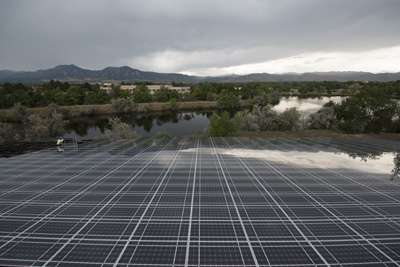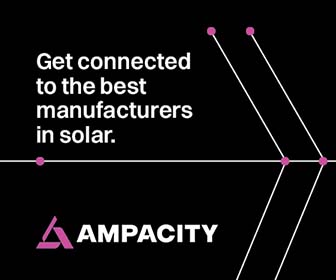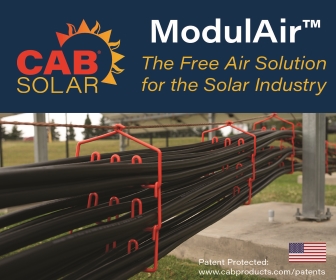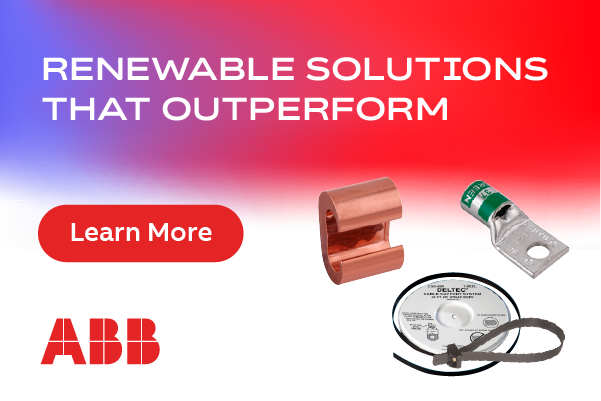Aesthetic Appeal: Solar as a showpiece to commercial buildings
 Photovoltaics (PV) was first conceived in 1839 when French scientist Edmund Becquerel discovered that light falling on certain materials could produce electricity. But, 100 years would go by before researchers would start developing what has evolved into the solar energy systems that we know and use today. Between the 1930s and the 1970s, PV solar technology would undergo random spurts of growth and numerous starts and stops. It wasn’t until the 1970s, when silicon became more readily available, that PV truly launched into a mainstream product.
Photovoltaics (PV) was first conceived in 1839 when French scientist Edmund Becquerel discovered that light falling on certain materials could produce electricity. But, 100 years would go by before researchers would start developing what has evolved into the solar energy systems that we know and use today. Between the 1930s and the 1970s, PV solar technology would undergo random spurts of growth and numerous starts and stops. It wasn’t until the 1970s, when silicon became more readily available, that PV truly launched into a mainstream product.
In 1955, the first commercial-grade solar cell became available with two percent efficiency and cost a whopping $1,785 per watt. Over the next 60 years, solar cell efficiency would advance, and costs would substantially decrease. The average commercial-grade solar cell efficiency is now ~17.5% for multicrystalline and ~19% for monocrystalline, and it’s selling for under $1/watt.
Over time, companies have also evolved the look of solar modules to meet potential applications, such as for smaller residential and commercial projects (including building-integrated photovoltaics or BIPV). Even today, however, standard solar modules look much the same as those originally created in the 1960s.
The standard module is composed of solar cells, which have been strung together and laminated to a piece of glass with a white backsheet (although a black backsheet is becoming more popular). To strengthen the laminate, modules are framed with aluminum to protect the edges and to add additional rigidity. Overall, the standard solar module is not the most visually attractive device. But solar energy systems have typically been installed in less than visible locations, such as on rooftops, where appearance has been of little value.
In more recent years, solar systems have become far more mainstream and have started appearing in unexpected locations, including as awnings and canopies, as well as on carports, and even as part of the walls on the front side of a building. So, where appearance meant little in the past, aesthetics are becoming a more significant component when it comes to selecting modules. Building owners are considering visible installations, and are now looking for visually appealing solar alternatives.
When beauty counts
Standing at over 30 feet tall, Colorado’s largest awning at Western Disposal’s headquarters is a study in solar aesthetics. Not only is the recently built awning functional, this 198-kilowatt (kW) system provides for 20% of the company’s annual operating electricity, while offering shade to the company’s trucks when being refueled. It’s also quite visually impressive, meeting one of the latest goals in solar power: aesthetics. The structure faces a well-ridden bike path, and is even visible from nearby roads. So, although the company wanted to show off their green initiatives, they didn’t want it to be an eyesore for local residents.
As Boulder’s waste management company, Western has gone from simply being a “trash” company to a one that also collects for recycling, composting, and even spring clippings to make mulch. Plus, all of their trucks now run on natural gas. As a progressive green-minded company, it seemed only a natural progression for them to consider alternative sources of energy to run their facility.
In 2011, Western Disposal started looking into PV solar for their facility, prompting them to contact their architect and a local solar installer to seriously evaluate the possibility. Multiple locations in and around the facility were considered, but the building roofs didn’t have space for a large-sized system, so a solar ground-mount system was considered.
Directionality, functionality, visibility, and aesthetics were all taken into account. In 2012, Western decided on building an enormous awning that wouldn’t take up a significant amount of land space, but that would provide for a portion of the company’s operating costs. The structure would also serve as shade for their natural gas trucks during the refueling process. Significantly, the awning has also added to the look of the facility, providing an aesthetically visible structure that reflects the company’s dedication to the environment.
Meeting objectives
As with any project, challenges arise. Western Disposal’s solar energy project proved no different. Fortunately, the primary two concerns that came up could be addressed early on and during the design stage of the project.
1. Aesthetics
As mentioned, the selected location would be extremely visible to bicyclists, pedestrians, and vehicles; therefore, one of the main goals for this project was a visually attractive solar system.
2. Durability
Because of the dramatic weather changes in the Colorado area—from heavy snowfalls, to afternoon thundershowers that have the potential to produce up to golf-ball sized hail, to wind gusts that reach up to 50 miles-per-hour—the durability of the solar system installed had to be reliable and tough. The solar panels would need to be able to handle the often-time severe shifts in weather, while remaining efficient.
To achieve the look created by the architect, while being mindful of the need for durability, the final modules selected were frameless, with a unique through-bolt mounting system. This allowed the modules to sit directly on the racking system, mounted with only a 1/4-inch gap between them. The intent was to make it appear as though the solar modules are just one large sheet of glass, strategically placed to look like they’re floating above the awning structure. The module uses a six-millimeter thick glass tempered PV glass, which is one of the strongest in the industry.
Foresight and collaborative planning by the architect, installers, and module engineers played an important role in the Western Disposal solar project. Not only is the system impressive to look at (meeting the aesthetic’s challenge), but the September 2013 Colorado floods also tested the durability of the panels on a level no laboratory could replicate. Three days of constant wind and rain pounded the panels and a post-flood inspection showed no damage to the panels or to the structure whatsoever (more than meeting the durability challenge).
Final attraction
This structure is just one example of many solar energy projects that are beginning to show up in the industry. Solar systems are no longer only being installed on the backside of a roof or on the top of a commercial building where panels cannot be seen. More and more, they’re representing a prominent showpiece to a building.
A 198 kW is relatively small compared to a 420 kW solar carport or a 1.2 MW solar canopy, but few solar projects can yet match the artistic appeal of the recently installed Western Disposal installation.
Overhead solar awnings will continue to show up on commercial buildings, malls, apartment complexes, and homes. Given land constraints, government and commercial offices, as well as schools are starting to make use of their parking lots to build solar carports to shade vehicles, while providing electricity for their buildings. But, because of the high visibility of these locations, not only is functionality being considered, architectural aesthetics have become equally as important.
Watch the time lapse build of the Western Disposal Awning on YouTube at www.youtube.com/watch?v=LEaQEgb_4Zg
LUMOS
www.lumossolar.com
Author: Stephanie Chen
Volume: November/December 2013









.png?r=9020)


